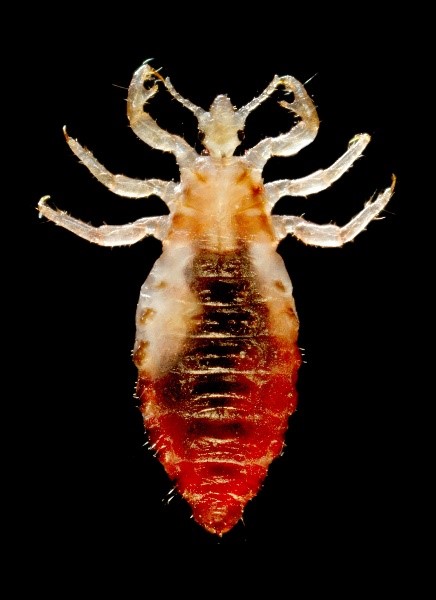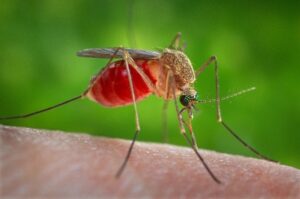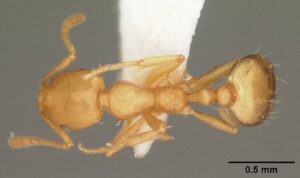Introduction

There are 225 species of sucking lice worldwide. They parasitize their hosts externally by puncturing their skin and sucking their blood, and the male is no different than the female. They are small, wingless insects with a flattened body from top to bottom, and they are slow-moving insects. They live attached to their host; they do not leave it except in the event of a health condition deteriorating through death or illness, as they leave the dead host. Lice do not live on a host whose temperature has risen above normal. Lice are transmitted between hosts through contact, and this often occurs in public places such as crowded schools, cinemas, and means of transportation, as well as between family members because of their common living area. Lice live on their hosts only, as each type of lice has a special host, but it specializes in infecting a special part of the host’s body.
Lice insects are similar in their stages, especially between adults and nymphs. Nymphs do not differ from adults except in size and sexual maturity. The mouth parts are piercing-sucking, and they feed by sucking the blood of the host, causing pain and anxiety to the host. The legs of these insects work horizontally, allowing the insect’s abdomen to stick to the host.
Pest control professionals are seldom directly involved in louse control because lice are parasitic and spend their entire lifetimes on the host (either humans or animals). The responsibility for any specialized treatment belongs to either the physicians or veterinarians, depending on the host involved. Our ETS professionals are able to identify lice species occurring in people and have the knowledge of their biology to answer any customer concerns.
There are three types of human-sucking lice, two of which are closely related, almost like two strains of one type, and the third is a separate type. The two closely related types are body and head lice, and the third is pubic lice.
1- Body Louse – Pediculus humanus humanus Linneaus (Pediculidae: Phthiraptera)
2- Head Louse – Pediculus humanus capitis De Geer (Pediculidae: Phthiraptera)
3- Crab or Pubic Louse – Pediculus pubis (Linneaus) (Pediculidae: Phthiraptera)
1-Body Louse:
Identification

- Adults are 2.3–3.6 mm in length.
- The adult is about the size of a sesame seed, has 6 legs (each with claws), and is tan to grayish-white.
- Eggs (also called nits) are 0.8 mm by 0.3 mm, oval and usually yellow to white.
Life Cycle and Common Characteristics
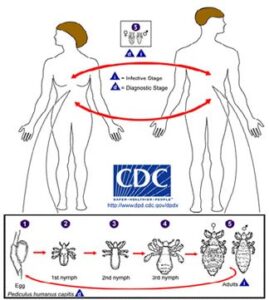
- Body louse has three stages: egg, nymph, and adult.
- Adults place eggs on garment fibers instead of attaching them directly to the host’s body hair.
- This egg placement behavior is a unique habit that does not occur in other sucking lice.
- Lice tend to remain on the host’s body only during the actual feeding process.
- When not feeding, they will typically move into the host’s clothing, where they will often be concealed in folds or seams.
- Lice live and lay eggs on clothing and only move to the skin to feed.
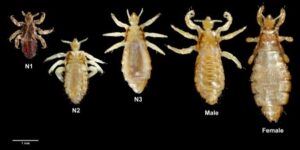
- Eggs take about 6 to 9 days to hatch.
- The egg hatches to release a nymph.
- The nymph looks like an adult.
- Nymphs mature after 3 molts and become adults about 7 days after hatching.
- Females are usually larger than males and can lay up to 8 eggs per day.
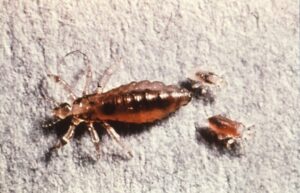
- Adults can live up to 30 days on the body.
- Adult lice need to feed on blood several times daily. Without blood meals, the louse will die within 2 days off the host.
Damage and Medical Implications
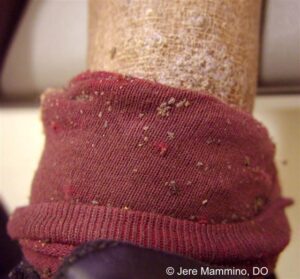
- Body lice infestations (pediculosis) are spread most commonly by close person-to-person contact but are generally limited to persons who live under conditions of crowding and poor hygiene.
- Dogs, cats, and other pets do not play a role in the transmission of human lice.
- Intense itching and rash caused by an allergic reaction to the louse bites are common symptoms of body lice infestation.
- When body lice infestation has been present for a long time, heavily bitten areas of the skin can become thickened and discolored.
- As with other lice infestations, intense itching can lead to scratching which can cause sores on the body; these sores sometimes can become infected with bacteria or fungi.
- Body lice can spread epidemic typhus, trench fever, and louse-borne relapsing fever.
- Body lice infestation is diagnosed by finding eggs and crawling lice in the seams of clothing.
2-Head Louse:
Identification
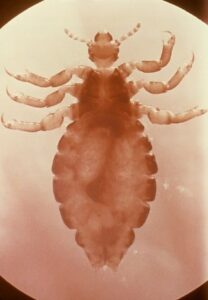
- The lengths of the female is 3 mm and 2 mm in the male.· The adult is about the size of a sesame seed, has 6 legs, and is tan to grayish-white.
- The nymph looks like an adult.
- Eggs (also called nits) are 0.8 mm by 0.3 mm, oval, and usually yellow to white.
Life Cycle and Common Characteristics

- The louse takes the color of the hair on which it lives on, or it is white or gray, and the preferred place for its living is the place where the hair grows.
- The eggs of this lice stick to the hair, and along with the skin of the head and the scales of dead lice form a thick layer that mixes with dirt and soil, allowing the growth and reproduction of other secondary parasites such as fungi and bacteria that live on these materials and cause other diseases to the infected person.
|
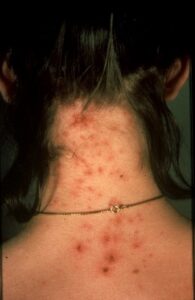
Credit: KostaMumcuoglu |
Damage and Medical Implications
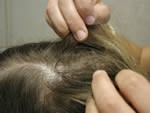
- Head lice are the most commonly encountered by pest control professionals. They are most common in school students where they infest the head and neck.
- Head lice infestation, or pediculosis, is spread most commonly by close person-to-person contact by sharing the use of personal items, such as hats, hairbrushes, combs, or wigs.
- Dogs, cats and other pets do not play a role in the transmission of human lice.
- Head lice are not known to transmit any disease and therefore are not considered a health hazard.
- Itching is the most common symptom of head lice infestation and is caused by an allergic reaction to louse bites.
- It may take 4–6 weeks for itching to appear the first time a person has head lice.
- Other symptoms are a tickling feeling or a sensation of something moving in the hair, Irritability and sleeplessness, and sores on the head caused by scratching.

